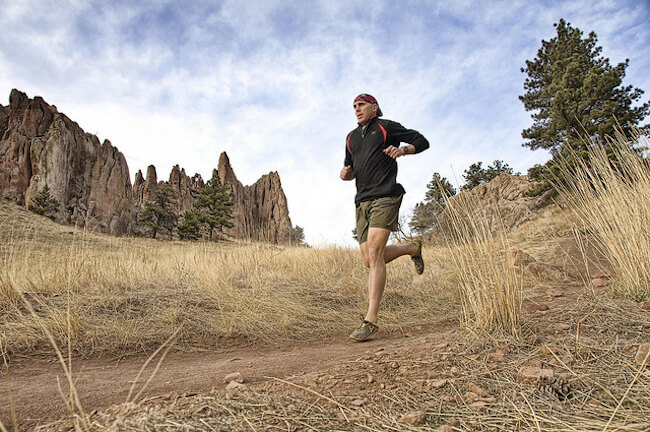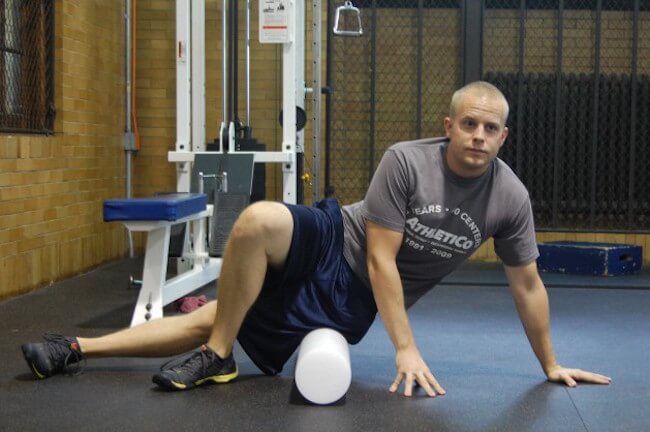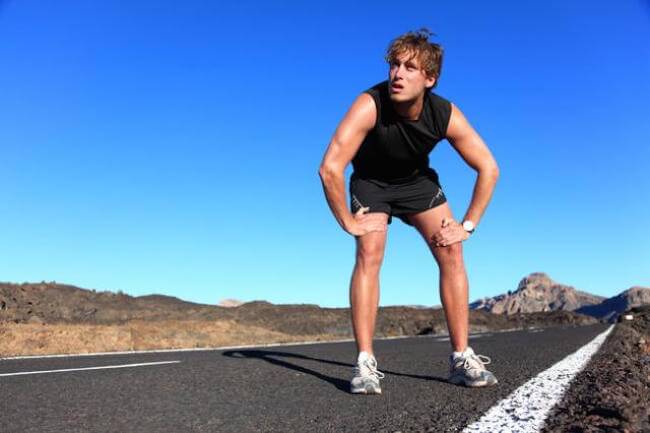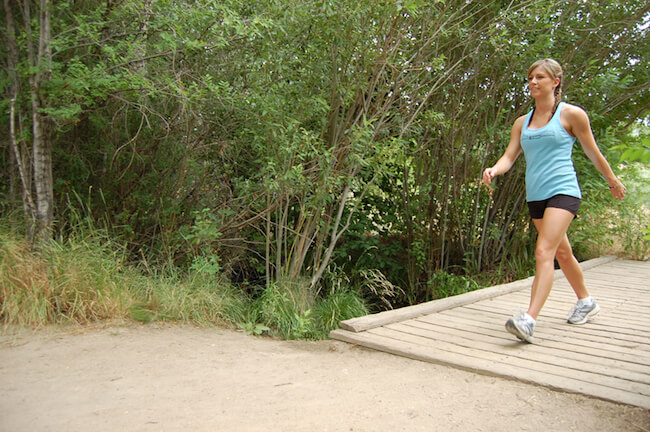There is something special about working outdoors. The beautiful surroundings, the fresh air and soothing sound of the nature adds an extra bit of fun to the simple workout. And, I believe, the opportunity to escape from the monotonous surroundings and stale air of gym, in itself is a huge step forward towards making working out fun. Then, there is a distinctive feeling of freedom and abundance that you often get by exercising in the lap of nature.
And, trail running is one of the best ways to get some action in the open. You get to enjoy the lush scenery, while pushing your body to the very extremes. Leaving the nature aside, the trail running is a good challenging workout to whip your body back into shape. Not only it is a great cardio routine, it also helps in building lean muscles. And, you can add couple of bodyweight exercises to the trail running to get a great full body workout. Also, by allowing us to disconnect from the daily hustle, the trail running has a meditative quality that melts the stress and anxiety away.
With all these benefits, I don’t think you will need any additional motivation to take your running workout outdoors this summer. Whether you are a seasoned pro or just starting out, the tips listed in this article will help you get most out of the trail running session and will ensure you are doing everything right.
-
Keep a slight bend in your knees all the time

-
Foam Roll
For the uninitiated, first let me give a brief description on what foam roll is. Foam roll, which is the common name for self-myofascial release session is a self-massage to release muscle tightness or trigger points. It is usually done using a foam roller, lacrosse ball, Theracane, or your own hands. By applying pressure on specific points on your body, you are able to speed-up the recovery of your muscles and assist in returning them to their natural state. And, the natural state means your muscles are elastic, healthy, and ready to perform the regular tasks instantly. The trail running puts high impact on your joints and quickly tightens the muscles, which leads to formation of knots in your muscles. The foam rolling can help in breaking up these muscle knots and, restoring normal blood flow and function. Releasing the trigger points assists in reestablishing proper movement patterns and pain free movement, which ultimately improves performance. So, make it a point to dedicate ten minutes before and after trail running to foam roll your quads, hamstrings, calves and glutes.
-
Incorporate sprint intervals
You might have heard about the high intensity interval training that burns fat faster. It is a perfect way to retain lean muscles, while burning away extra flab. The fat torching benefits of the interval training have been backed by research as well. In a study conducted at the University of Guelph, obese women were divided into two groups. One group was asked to perform high-intensity interval training on stationary bikes, while other was asked to cycle at a constant speed. After a specific period, it was found that women who did interval training lost 36 percent more weight. During an exercise, the fat stored as triglycerides in fat cells is broken apart into fatty acids. And, these fatty acids are converted into usable energy. HIIT increases body’s ability to oxidize fatty acids by placing strenuous and asymmetrical energy demand. You can incorporate the principles of high intensity interval training in your trail running sessions with the use of sprint intervals.
Keep on changing the pattern of the interval training every week, so that the body doesn’t get used to the energy demands. The demand shock is the weapon that HIIT uses to melt fat faster. So, ensure you are keeping your body on its toes.
-
Keep your muscles engaged
It is easy to forget to engage your supporting muscles while running, especially when you are experiencing fatigue. And, paradoxically, it is the time when you need to ensure that your supporting muscles are fully engaged to minimize the chances of getting injured. By engaging your supporting muscles, you can dramatically improve posture and balance. The failure to do so could lead to posture and muscular problems. For example, if your core isn’t fully engaged, the chances are that you will round or curve your back while running, which will put undue pressure on your vertebra. And, I think you are smart enough to imagine the consequences of doing so.
By activating your core and glutes, you would be able to make your running stronger and most balanced. Also, it will make your running movement more fluid.
-
Make it a whole body workout
You can turn your trail running session into a full body workout by incorporating couple of great bodyweight exercises. Another benefit of doing bodyweight exercises during your running sessions is that you give your leg muscles a much needed rest, which helps you in prolonging your running sessions. So, every 10 to 15 minutes, stop to perform couple of exercises such as squats, push-ups and planks. And, if you can find a smooth slab of a rock, then you can throw on mountain climbers and inclined push-ups as well. By adding body weight exercises to the running session, you effectively convert it into a circuit training program. And, circuit training is bad news for the accumulated fat. It will torch more calories in 20 minutes than you can burn in double that time by just running. Plus, you would be torching calories for up to 48 hours after the workout has ended.
-
Refuel after the run
Post workout nutrition is very important. It is essential in rebuilding the muscle fibers that were broken down during the workout. It is the key to making yourself stronger and better. Fuel your body with proteins and complex carbs within 30 minutes of the completion of the workout. If you don’t supply your body with necessary ingredients, then your body will burn muscle mass to fuel the recovery. A good protein shake is the first step towards refueling up. Of course, it isn’t necessary that you should have a protein shake. But, it is the quickest and most effective way to provide your body with muscle building blocks. However, that doesn’t mean, you can skip your post workout meal. The lack of solid post-run meal will lead to lethargy and/or sugar cravings later in the day. The ratio of carbs to proteins can vary from 2 to 1, to 4 to 1, depending on the type of running workout, you have done.
-
Cool down with a walk
It is important to keep your lungs open after the run as it allows for maximal oxygen intake. Also, it is essential that you slow down your breathing and return your heart rate to the normal in a slow and controlled manner. And, walking is a great way to do so. As you walk, try to take long deep breaths, inhaling for five seconds and exhaling for five seconds. Now, you are free to collapse on to the ground with fatigue.







